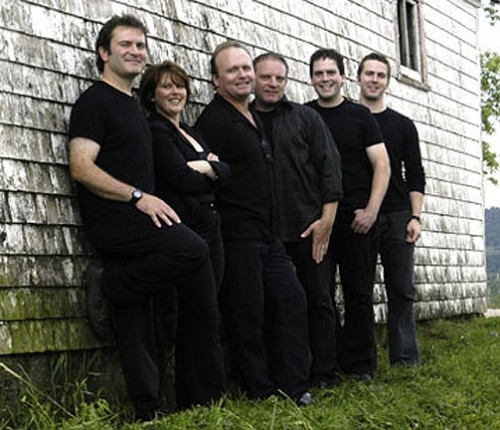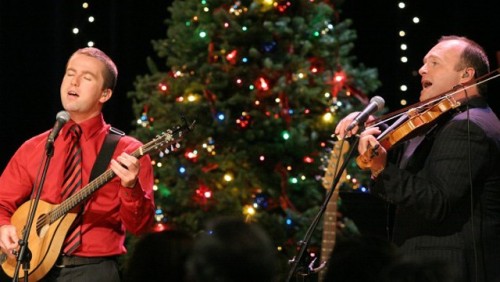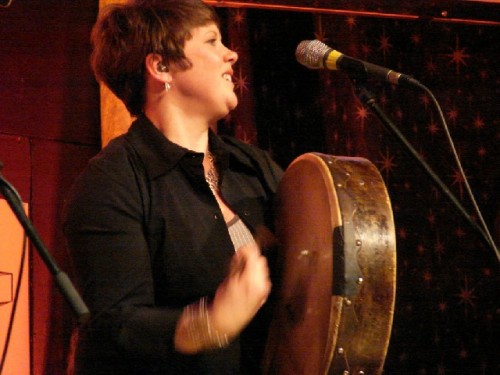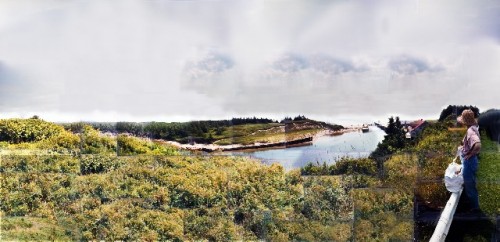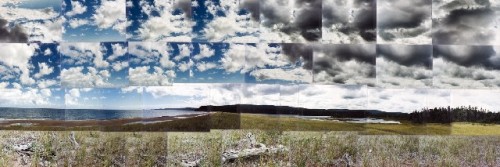The Barra MacNeils at Clark Art Institute
A Celtic Holiday Concert
By: Charles Giuliano - Dec 05, 2011
The auditorium of the Clark Art Institute was packed for its annual Holiday celebration.
After an absence of seven years the seven piece, family band The Barra MacNeils delighted a strong following of local fans.
We learned that there are alternating A and B tours. On A years the band starts on the Canadian West Coast and works their way East during the Holiday season. This is a B year in which they tour along the East Coast.
Amusingly they commented that when asked if they celebrate holidays together the response is “Yes, we start early and celebrate for over a month.”
Astrid and I have twice driven to Nova Scotia and Prince Edward Island. We looped around the scenic coastal Cabot Trail stopping here and there at B&B’s and small motels. Part of the bucolic adventure was seeking out Saturday night musical gatherings in churches and barns.
So we much anticipated again enjoying traditional Celtic music. The Barra part of the band’s name derives from the Island off the Scottish coast from which the MacNeil family crossed to the New World. Bringing much of their culture and heritage with them.
Originally the coastal region of Eastern Canada was Acadia. After the French and Indian War the French speaking people were ethnically cleansed from the region. This is the theme of Longfellow’s poem Evangeline. The Acadians who managed not to be deported found their way down the Mississippi and became the Cajun people of Louisiana.
The region was renamed Nova Scotia. That translates as New Scotland.
The Celts were a people inhabiting ancient sites all over Europe. They left behind many monuments of which the most famous is Stonehenge. It was used by the Druids for religious ceremonies based in nature.
Some elements of the Winter Solstice celebrations of the Celtic peoples such as mistletoe, Yule logs, wassail, and Christmas trees were adapted from pagan traditions. The Winter Solstice of December 23 merged with the Christian celebration of Christmas. The date of the December 25 as the birth of Christ is arbitrary and has no documentary basis. It is at best an approximation.
In that sense the traditions of Christmas, including the songs performed at the Clark, some in Celtic tongues from Scotland and Normandy, represent a compilation over the centuries.
As an encore, for example, the audience joined in to sing “Auld Lang Syne.” (Scots pronunciation: [É”Ëld lÉ‘Å‹ sÉ™in]: note "s" rather than "z") it is a Scots poem written by Robert Burns in 1788 and set to the tune of a traditional folk song. It is well known in many countries, especially (but far from exclusively) in the English-speaking world; its traditional use being to celebrate the start of the New Year at the stroke of midnight.
The song's Scots title may be translated into English literally as "old long since", or more idiomatically, "long long ago", "days gone by" or "old times". Consequently "For auld lang syne", as it appears in the first line of the chorus, is loosely translated as "for (the sake of) old times".
Humorously in the midst of a song in an unfamiliar Celtic tongue we were urged to “sing along.”
Not that the program was inaccessible. There were a number of familiar Christmas songs woven into the two, hour long sets.
Donning a Santa cap, the bass player, Jamie Gatti, the only musician of the seven on stage not a member of the MacNeil clan, performed an electric bass solo. The audience easily recognized the refrain of “Rudolph the Red Nosed Reindeer” for a merry sing along.
Most impressively the MacNeils performed on a great variety of instruments. These included guitars, violins, mandolins, banjo, bass, tin whistle, uilleann pipes, bodhran, Celtic Harp, bouzouki, accordion and flute.
Lucy, the lone female on stage, played a traditional drum which resembled a large tambourine held with one hand and struck with the other using a short double ended mallet. She stunned the audience with her rendering of “Ave Maria.” Now and then she broke into brief passages of step dancing. At one point joined by three brothers.
There was a bit of a mishap when the stool of keyboard player Sheamus collapsed. The audience gasped but nothing was hurt other than his pride. The other brothers include: Kyle, Stewart, Boyd and Ryan.
The point of the evening was to perform all of those traditional Christmas songs. But for me the most interesting and enjoyable parts of the performance occurred when they jammed on that intriguing mélange of uniquely Celtic instrumentation and rhythms.
That recalled the merry evening Astrid and I enjoyed during a summer barn dance in Nova Scotia.
On the drive home after an enjoyable event we recalled our time exploring the Cabot Trail and time spent at Markland on the coast. Astrid commented that she would return in a heartbeat.
At least for one night the music of Cape Breton came a calling in the Berkshires evoking all those heart warming memories.

